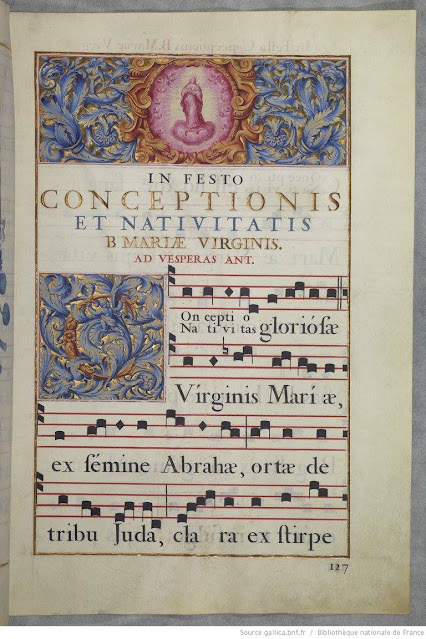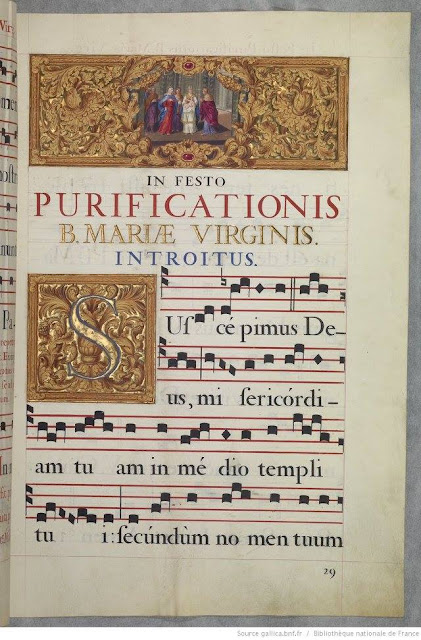Many of our readers will have no doubt seen pictures floating around on the internet, showing immensely large volumes that would have been communally chanted from and this is the type of book that would have served that purpose as well.
In this case we have a particularly ornately illuminated volume, but given that it appears to have functioned within a French royalist context, that should come as little surprise. This particular graduale come at a period that would have see a transition between the Renaissance and baroque eras and the art certainly reflects it with its beautiful colour and copious use of vegetal motifs.
It is of course also worth recalling that at the time this was produced, that printing press had long been operation, so it was a purposeful choice to create a unique, beautiful, colourful, hand-illuminated tome for service of the sacred liturgy. It reflects a time and an attitude which understood the principle of putting one's very best foot forward where liturgical art was concerned.
For those who are interested, you can find the entire scanned text at the website of the Bibliothèque Nationale du France, but here is a small sampler of just some of the pages of this impressive Graduale and Antiphonale. (As you look through these pages, do make sure to look closely at the scenes that have been embedded into each page, related to the particular liturgical occasion/theme of the page in question.)
-------














































